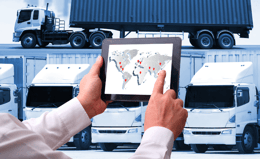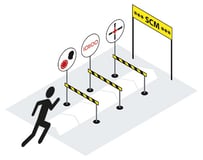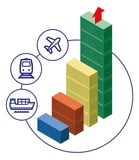5 Crucial Transport Logistics Stats to Know
Brian Hoey - October 18, 2018
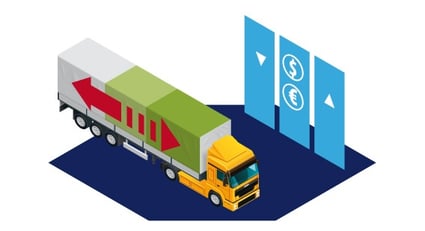
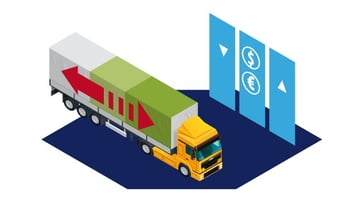 Logistics 4.0, digital logistics, modern transport logistics: whatever you want to call it, the new paradigm emerging in the world of transporting goods from production plants to consumers is gaining steam rapidly. While, in the past, logistics was frequently a matter for pen-and-ink planning, relying on a set of well-trodden trade routes, the industry is becoming more sophisticated, more complex, and more connected than ever before. As the industry evolves, the utility of this new level of connectivity will become more and more apparent, resulting in exciting transformations in the way that goods are moved from place to place. Don’t believe us? Just take a look at some of these statistics.
Logistics 4.0, digital logistics, modern transport logistics: whatever you want to call it, the new paradigm emerging in the world of transporting goods from production plants to consumers is gaining steam rapidly. While, in the past, logistics was frequently a matter for pen-and-ink planning, relying on a set of well-trodden trade routes, the industry is becoming more sophisticated, more complex, and more connected than ever before. As the industry evolves, the utility of this new level of connectivity will become more and more apparent, resulting in exciting transformations in the way that goods are moved from place to place. Don’t believe us? Just take a look at some of these statistics.
$5 billion
The expected value of the global smart transport market by 2020 (double its value as of 2015). This suggests that as new, sophisticated technology (IoT sensors, machine learning for production processes, etc.) continues to take hold in modern manufacturing, the preference for smarter shipping, freight forwarding, and transport management that can integrate with Industry 4.0 processes will increase. Why? Because hurdles like information silos and low downstream visibility levels are often alleviated by the presence of digitized transport logistics workflows that boast data integration with production planning and inventory management.
Source: https://www.statista.com/statistics/279583/size-of-the-global-smart-transport-market/
6-10%
The increase in total margins for companies with optimized distribution networks. Even now, many businesses think of their supply chains as costs, rather than as tools for driving added value and increased efficiency. By moving goods in an optimized way (i.e. utilizing just-in-time deliveries and improving route and load efficiency), businesses can decrease their overall inventory needs while actually improving manufacturing efficiency (due to the decreased likelihood of parts shortages and the potential for decreased operational lead times), resulting in reduced costs and improved throughput.
Source: https://www.bain.com/insights/turn-your-supply-chain-into-a-competitive-weapon/
Less than 30%
The combined local market share of Europe’s top logistics providers. This stat may seem a bit out of place in this piece, but the relatively low number is extremely suggestive of just how fragmented the global logistics market is at the moment. What does a fragmentary market mean for manufacturers, shippers, and freight forwarders? Essentially, a lack of cohesion in this sphere has historically led to low visibility, opaque levels of complexity, and increased risk of disruption—i.e. a series of serious obstacles to efficient transport logistics. In the face of these obstacles, businesses must turn to increased digitization and increasingly connected workflows in order to bring a modicum of visibility back to these workflows. In this way, the fragmented logistics landscaped is turned from a liability into a strength, giving digital manufacturers and shippers alike more flexibility and greater control over their transport options, leading to more agile workflows overall.
Source: https://www.bain.com/insights/challenges-and-winning-models-in-logistics/
5x
Growth in the value of intangible assets for S&P 500 companies from 1975 to 2015. This is another slightly oblique statistic on its face, but bear with us. Decades ago, the value of a company was almost entirely (more than 80% on average) based on tangible assets like buildings and equipment, with intangibles like information technology and supply chain logistics processes accounting for the remaining 20%. Today, this ratio has reversed itself. What defines a company’s (even a manufacturing outfit’s) value is its processes and its technology. Think about Amazon: how much of its value comes from the actual products it sells, and how much comes from a robust supply chain that it’s able to leverage into incredibly specific and reliable delivery options across the globe? This statistic naturally applies to proprietary software and internal processes just as much as it does to transport logistics, but it should hammer home in particular the idea that in the modern value stream, even when you’re selling goods you’re also selling a service: the on-time delivery customer orders and support throughout a product's lifecycle. Expectations are evolving to include this notion for both B2B and B2C customers, and businesses need evolve along with those expectations by updating their transport logistics workflows in order to stay competitive.
Source: https://www.bain.com/insights/the-intangible-benefits-of-a-digital-supply-chain/
$26 billion
The estimated B2B autonomous car market by 2025. We’ve spent plenty of space in this article discussing the importance of modernizing logistics workflows, but we haven’t necessarily spent as much time on the “how” side of the equation. This stat should give somewhat of an indication of what the future might hold. As shipping processes become dominated by both fully and partially autonomous vehicles, businesses will have to incorporate IoT devices, RFID chips, and the means of tracking the resultant data and utilizing it for smarter routing and navigation procedures. In this way, manufacturers, shippers, and freight forwarders alike will be positioned to adopt and embrace digital transport logistics workflows that can turn mission critical data into actionable insights. Real-time traffic information, for instance, might allow transport planners to create new, more efficient shipping routes on the fly while still accommodating customer requirements and delivery windows. In this way, businesses can overcome the lack of flexibility that is sometimes endemic to transport planning, exchanging it for a degree of agility and adaptability that adds value in the form of resilience to disruptions.
This last statistic may be the most forward-looking, but it’s also the most instructive. While many of the most anticipated technologies (like autonomous vehicles) remain the horizon, much of the technological basis for the future of logistics in general and Logistics 4.0 in particular, from real-time supply chain information to smart pallets and containers, is already in place. As these innovations become more and more commonplace, they’ll become necessities rather than luxuries. How will your business prepare itself?
Source: https://www.bain.com/insights/future-of-autonomous-driving-infographic/
LATEST POSTS
- Understand Circular Economy in The Manufacturing Industry
- How Can Industry 4.0 IT Integration Be Achieved Smoothly?
- The Significance of Order Sequencing in Discrete Manufacturing
- How to improve your Supply Chain Management: The Power of Control Towers
- Optimizing Human Resource Scheduling in Manufacturing: A Technological Approach

